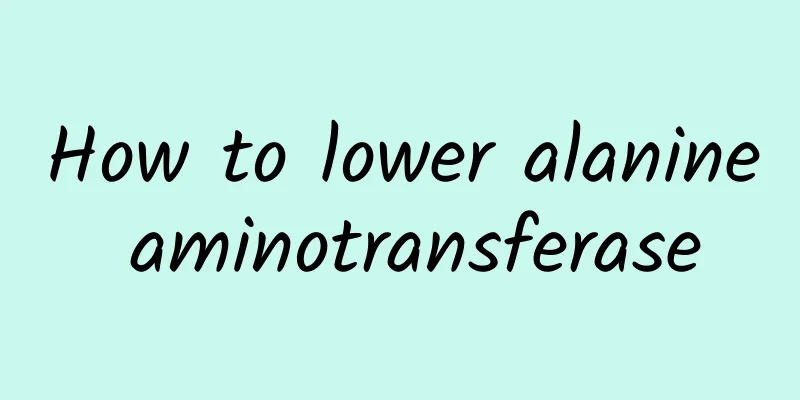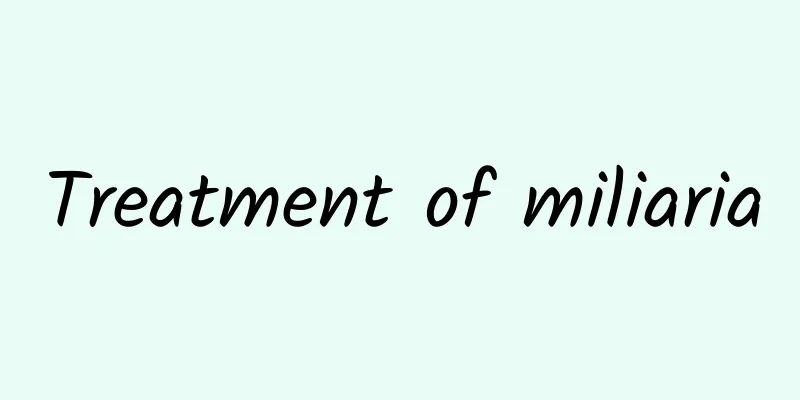What to do if you often have angina

|
If a patient experiences angina pectoris during normal times of tremor, this symptom needs to be taken seriously. It is likely caused by heart disease or coronary heart disease, and the patient needs to check the cause of the disease. People who often experience symptoms of angina pectoris need to be treated with drugs such as nitrate preparations, which mainly reduce intestinal resistance and dilate peripheral blood vessels to promote blood circulation, thus relieving the symptoms of angina pectoris. treat 1. Treatment during an attack (1) Rest: Rest immediately when an attack occurs. Symptoms will generally be relieved after the patient stops moving. (2) For more severe attacks, fast-acting nitrate preparations can be used. In addition to dilating coronary arteries, reducing resistance and increasing blood flow, this type of drug also relieves angina pectoris by dilating peripheral blood vessels, reducing venous return to the heart, lowering ventricular capacity, intracardiac pressure, cardiac output and blood pressure, reducing cardiac preload and afterload and myocardial oxygen demand. The most commonly used one is nitroglycerin tablets, which are taken sublingually. They start to work in 1 to 2 minutes and the effect disappears after about half an hour. Isosorbide dinitrate is also an option: it is taken sublingually and takes effect in 2 to 5 minutes. In addition, you can also use 0.2 ml (1 tube) of amyl nitrite, wrap it in a handkerchief and crush it, then inhale its volatile gas. Its advantage is that it works quickly, but it has significant side effects and smells like ether, so it is rarely used. When using the above drugs, sedatives may be considered. If the pain cannot be relieved after the above treatment or the attack is more severe than usual and lasts longer, you should consider the possibility of acute myocardial infarction and go to the hospital for examination and treatment in time. 2. During the remission period, various inducements should be avoided as much as possible. Adjust your diet, especially do not eat too much; avoid smoking and drinking. Adjust daily life and workload to reduce mental burden; maintain appropriate physical activity, but not to the extent that pain symptoms occur; bed rest is generally not required. The three basic principles of drug therapy during remission are: selectively dilating diseased coronary arteries; lowering blood pressure; and improving atherosclerosis. Patients with the first attack (initial onset) or frequent and severe attacks (exacerbated type), or supine type, variant type, intermediate syndrome, post-infarction angina, etc., suspected to be a prelude to myocardial infarction, should rest for a period of time and use long-lasting anti-anginal drugs to prevent angina attacks. The following long-lasting drugs can be used alone, alternately or in combination. (1) Nitrate preparations ①Isosorbide dinitrate. ②Pentaerythritol tetranitrate. ③Long -acting nitroglycerin preparations: Taking long-acting tablets allows nitroglycerin to be released continuously and slowly. Apply or stick 2% nitroglycerin ointment or patch preparation to the skin on the chest, the effect can last for 12 to 24 hours. (2) Beta-blockers (β-blockers) block the stimulatory effects of sympathomimetic amines on heart rate and cardiac contractility receptors, slowing the heart rate, lowering blood pressure, reducing myocardial contractility and oxygen consumption, and thus relieving the onset of angina pectoris. In addition, it also reduces the hemodynamic response during exercise, so that myocardial oxygen consumption decreases at the same level of exercise; it shrinks the small arteries (resistance vessels) in the non-ischemic myocardial area, so that more blood flows into the ischemic area through the extremely dilated collateral circulation (transport vessels). It can be used as an initial treatment drug, and the dose can be adjusted according to symptoms and heart rate. Adverse reactions include prolonged ventricular ejection time and increased cardiac volume, which may aggravate myocardial ischemia or cause heart failure, but its effect of reducing myocardial oxygen consumption far outweighs its adverse reactions. Commonly used preparations are: ① Propranolol, gradually increase the dose; ②Oxprenolol ; ③ Alprenolol; ④ Pindolol ⑤Sotalol ; ⑥Metoprolol ; ⑦ Atenolol; ⑧Acebutolol ; ⑨Nadolol , etc. Beta-blockers can be used in combination with nitrates, but be careful: ① β-blockers and nitrates have synergistic effects, so the dosage should be small, and the initial dose should be especially reduced to avoid adverse reactions such as orthostatic hypotension; ② When discontinuing beta-blockers, the dosage should be reduced gradually. Sudden discontinuation may induce myocardial infarction. ③It is not suitable for patients with heart failure, bronchial asthma and bradycardia. (3) Calcium channel blockers: This class of drugs inhibits the entry of calcium ions into cells and also inhibits the utilization of calcium ions in the excitation-contraction coupling of myocardial cells. It inhibits myocardial contraction and reduces myocardial oxygen consumption; dilates coronary arteries, relieves coronary artery spasm, and improves blood supply to the subendocardial myocardium; dilates peripheral blood vessels, lowers arterial blood pressure, and reduces cardiac load; it also reduces blood viscosity, resists platelet aggregation, and improves myocardial microcirculation. Commonly used preparations are: ① Adverse reactions of verapamil include dizziness, nausea, vomiting, constipation, bradycardia, prolonged PR interval, decreased blood pressure, etc.; ② The adverse reactions of nifedipine include headache, dizziness, fatigue, decreased blood pressure, increased heart rate, etc.; ③The adverse reactions of diltiazem include headache, dizziness, insomnia, etc. ④ New preparations: nicardipine, nisoldipine, amlodipine, felodipine, bepridil, etc. Calcium channel blockers are the most effective treatment for variant angina. This type of drug can be taken with nitrates, among which nifedipine can be taken with beta-blockers, but there is a risk of excessive cardiotonic suppression when verapamil and diltiazem are taken with beta-blockers. When discontinuing this type of drug, it is also advisable to gradually reduce the dosage and then stop taking it to avoid coronary artery spasm. (4) Coronary artery dilators can theoretically increase coronary blood flow, improve myocardial blood supply, and relieve angina pectoris. However, due to the complexity of coronary artery lesions in coronary heart disease, some vasodilators, such as dipyridamole, may dilate arteries without lesions or with mild lesions far more significantly than arteries with severe lesions, reducing blood flow in the collateral circulation and causing the so-called "coronary steal", which increases the blood supply to the normal myocardium and reduces the blood supply to the ischemic myocardium. Therefore, they are no longer used to treat angina pectoris. The ones still in use are: ① Molsidomide: Adverse reactions include headache, facial flushing, gastrointestinal discomfort, etc.; ②Amiodarone : It is also used to treat tachyarrhythmias. Adverse reactions include gastrointestinal reactions, drug rash, corneal pigmentation, bradycardia, thyroid dysfunction, etc.; ③ Ethoxyflavone; ④Capolomon ; ⑤Oxi is not a king; ⑥ Aminophylline; ⑦Opapaverine , etc. (5) Antioxidation: The core cause of atherosclerosis is oxidative stress and inflammatory response. Oxidative stress is caused by the oxidation of low-density lipoprotein (LDL) into Ox-LDL. Ox-LDL is the starting point of atherosclerosis. Therefore, it is particularly important to prevent the oxidation of LDL into Ox-LDL. The more certain treatment now is effective anti-oxidation. For example, natural antioxidants such as ASTA astaxanthin and anthocyanins have become the first choice for the prevention and treatment of coronary heart disease in the United States and other countries. Astaxanthin can significantly reduce the inflammatory factor CRP (C-reactive protein) and organize the thrombosis of atherosclerosis. 3. Other treatments: Low molecular weight dextran or hydroxyethyl starch injection, which improves microcirculatory perfusion and can be used for frequent attacks of angina pectoris. Anticoagulants such as heparin, thrombolytics, and antiplatelet drugs can be used to treat unstable angina. Hyperbaric oxygen therapy increases the body's oxygen supply and can improve stubborn angina pectoris, but the therapeutic effect is not easy to consolidate. External counterpulsation therapy can increase coronary blood supply and may also be considered. For patients with early heart failure, fast-acting digitalis preparations should be used while treating angina pectoris. 4. Surgical treatment mainly involves performing an aorta-coronary artery bypass grafting operation under extracorporeal circulation. The patient's own great saphenous vein is used as the bypass graft material, with one end anastomosed to the aorta and the other end anastomosed to the distal end of the diseased coronary artery segment; or the free internal mammary artery is anastomosed to the distal end of the diseased coronary artery, diverting blood flow from the aorta to improve the blood supply to the myocardium supplied by the diseased coronary artery. |
<<: What to do if you have intestinal colic
>>: The drug of choice for stable angina
Recommend
Can intestinal cleansing tea really help you lose weight? Why?
Bowel cleansing tea is specially developed to tre...
What to eat when your gums are swollen and painful
There are many things that patients with swollen ...
What should I do if my child still can't speak at the age of 2 and a half?
If a child still cannot speak by the age of two a...
Can pregnant women drink black wolfberry water?
It is also good for pregnant women to drink some ...
Black mole on back
Moles are benign lesions caused by local pigmenta...
What medicinal materials are good for making wine?
Many people have a jar of medicinal wine in their...
Symptoms of cranial nerve atrophy
There are many nerves distributed in the human br...
Something is rolling in the ears
Occasionally, you may feel something shaking in y...
How long does rabies last?
The incubation period of rabies is generally arou...
Dosage of Notopterygium wilfordii
Each type of therapeutic drug has strict requirem...
What will happen if a child has a high blood count?
The baby's blood count is often closely relat...
Can I eat tomatoes if I have diarrhea?
Everyone knows that diarrhea is mainly caused by ...
What is the reason for sweating
Many people have this problem in their daily live...
What impact does high umbilical cord blood flow have on the fetus?
Pregnancy is something that deserves great attent...
What should I do if my child has different legs?
Children's growth and development is very rapi...









